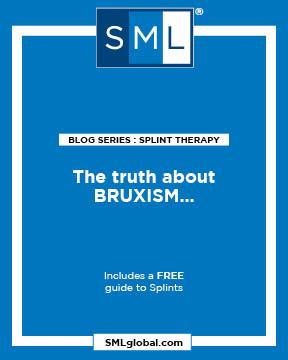 Let’s begin with a few key points:
Let’s begin with a few key points:
• Grinding or clenching breaks down enamel and can eventually reduce teeth to stumps.
• Absence of enamel makes it easier for bacteria to penetrate the softer part of teeth and produce cavities.
• As long as bruxism continues, the situation keeps getting worse.
“Although no hard and fast figures on the frequency of bruxism are available currently, it is known that 80% of all bruxers may be unaware of the habit (Thompson, Blount, and Krumholtz, 1994) or ashamed of it… and that evidence of the self-destructive behavior (worn teeth) may take years to actually appear.
Prevalence evidence ranges from 5% to 100% …but it can safely be said that at the very least, one out of twenty Americans brux. Most likely, one in four.”
Successful management of bruxism depends on minimizing the abrasion of tooth surfaces by the wearing of a dental splint created from a bite mold and fitted to the shape of an individual’s upper or lower teeth. When you consider the need for interceptive care – for adults as well as children – the message is clear. The essence of Splint Therapy is that potentially EVERYBODY needs it.
Dual Laminate Splints
The Dual Laminate Splint acts to absorb shock, stabilizing the occlusion while helping prevent further damage to teeth and the temporomandibular joint. 